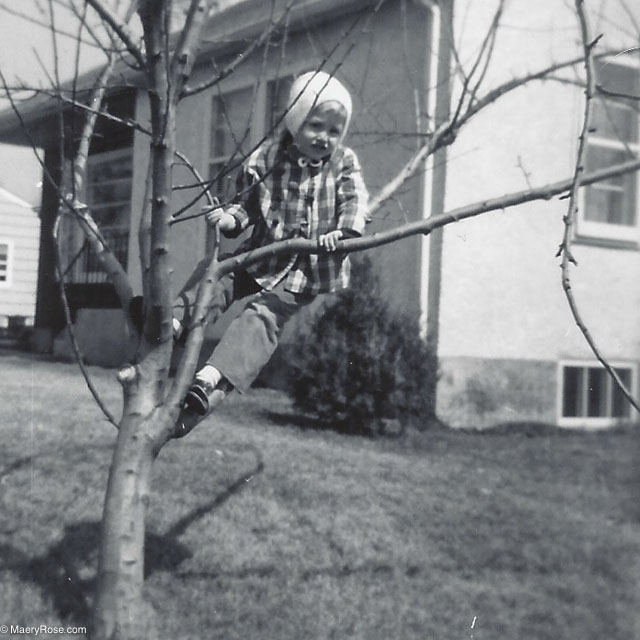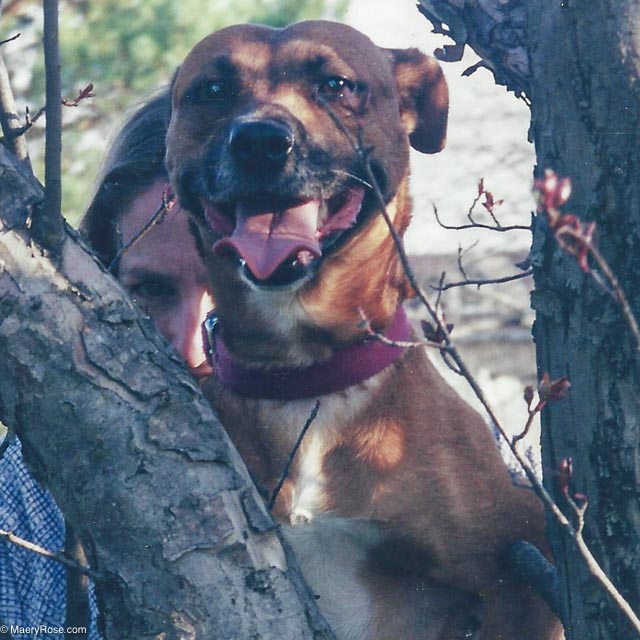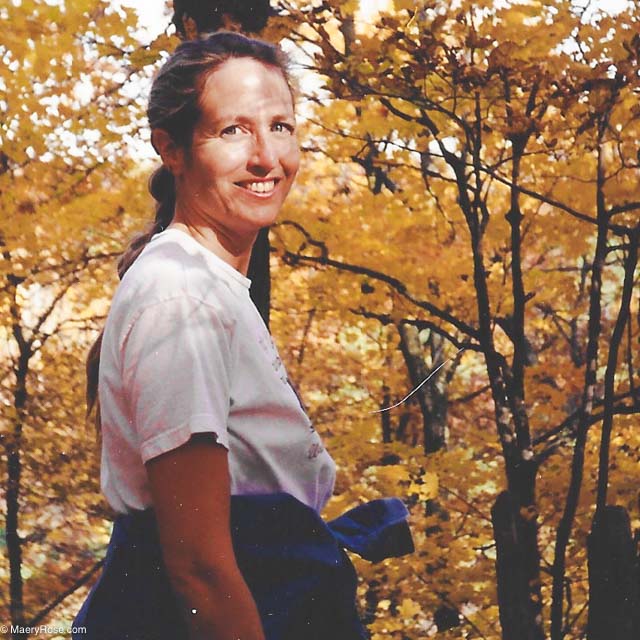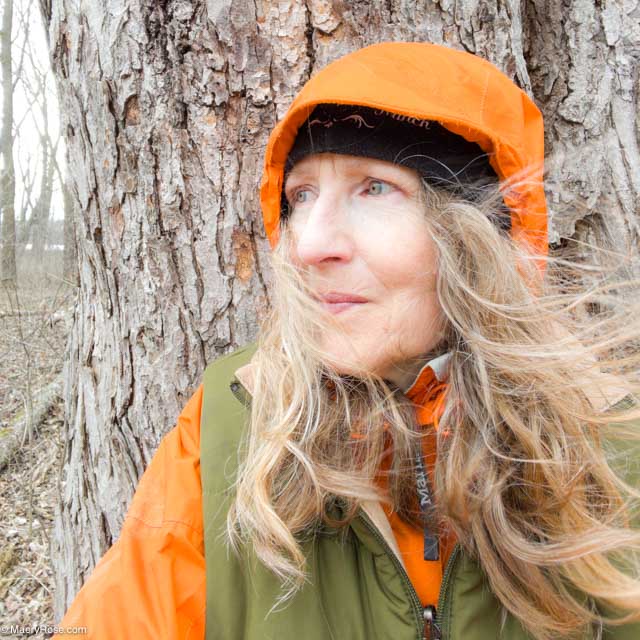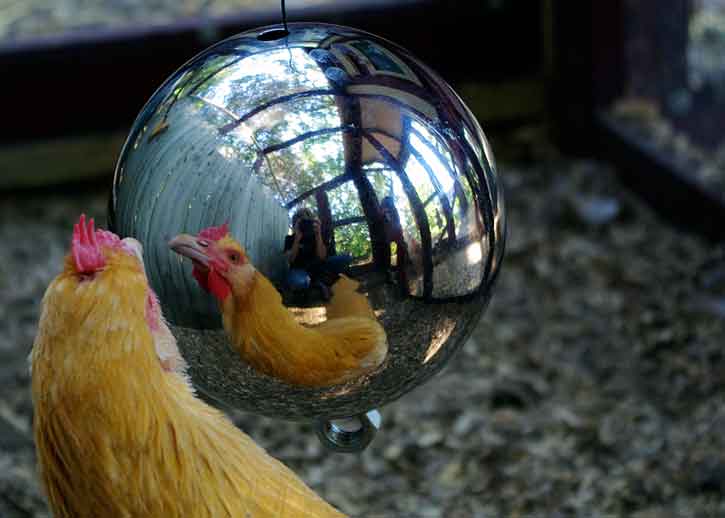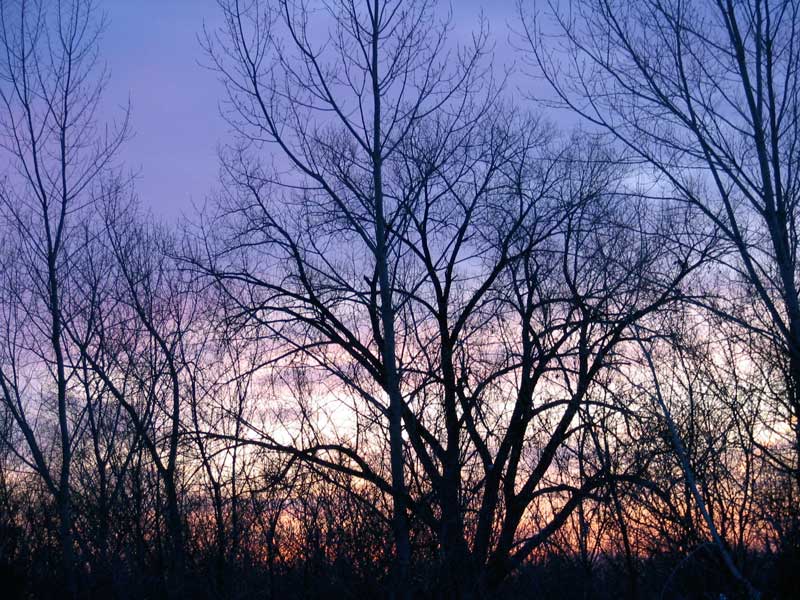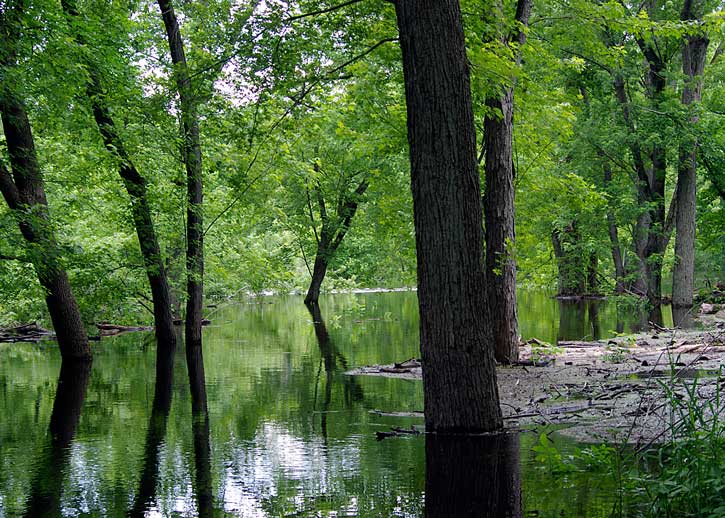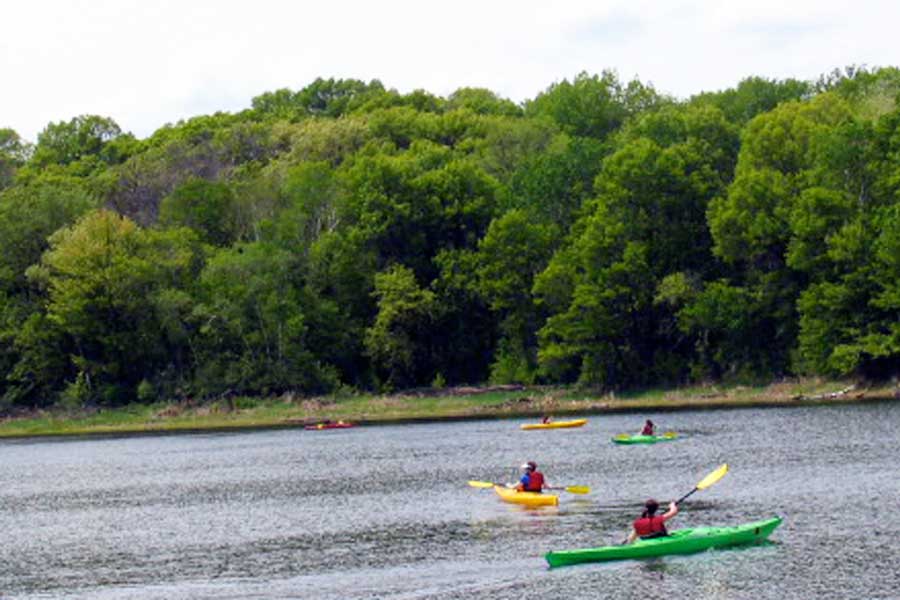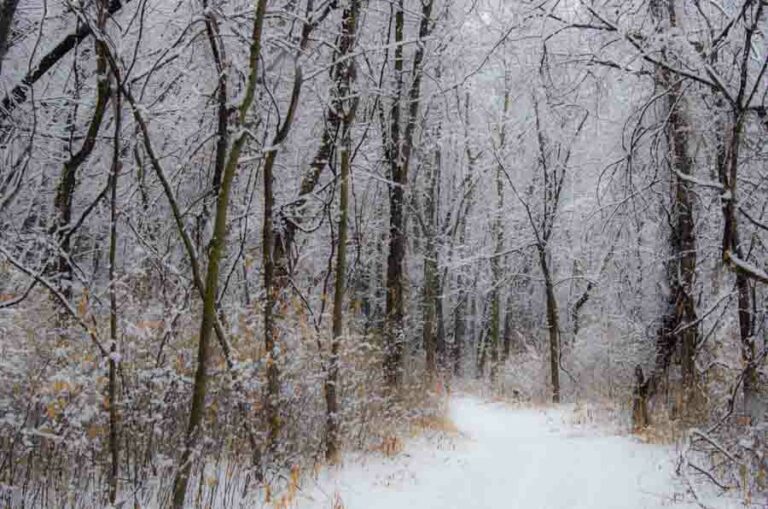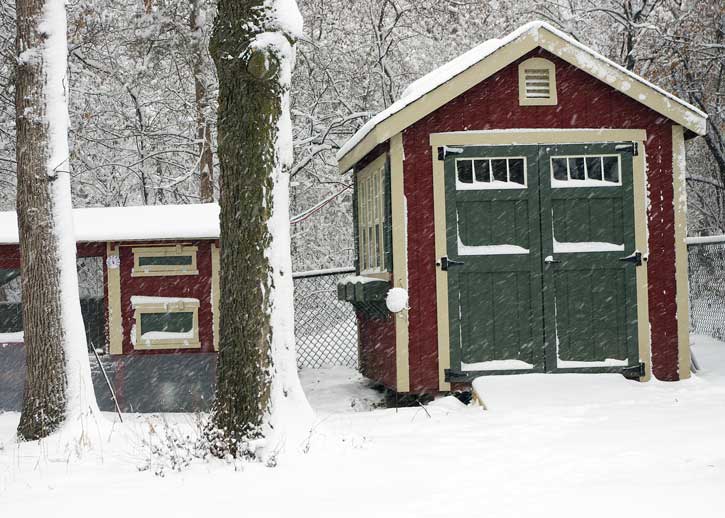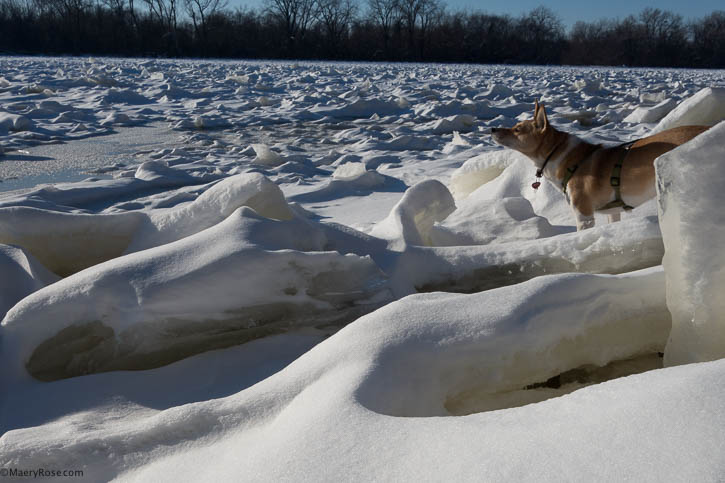Earth Day: Mother Earth Life
April 22 was Earth Day. It’s silly that anyone would think one day of calling attention to environmental issues is sufficient. It’s something on my mind every day—not in debilitating, overwhelming, problem ways (although it is that), but in the vein of ‘what can I do today to make things a little better?’ Or, at a minimum, I ask myself, ‘how can I take time to appreciate what humans haven’t yet ruined?’ Oops, I was trying not to go dark. I promise, I’m holding tightly to hope. Although it bothers me, so many people are placing all their hope on young people. That’s not fair. Are the rest of us going to sit on our asses? I think not.
Things That Shaped Me
I remember my father once chasing me around the basement, paddle in hand, yelling that I was only making things worse by running away. I couldn’t imagine how. The paddle my father held was wooden so I could have come away with a phobia about anything made from wood, like trees and panel-covered basement support pillars, which I dodged around in figure eights until my father caught a hold of an arm.
But no, I am wood-phobia free, and much wiser. When I feel anxious, constrained, trapped, overwhelmed, and the dozens of other feelings that come my way, I go outdoors.
What is a Mother Earth Life?
I ask myself this every day as I look for ways to purchase fresh greens and other products that aren’t in plastic containers or bags, look for recipes to make hair and skin products rather than bringing more plastic bottles into my life, and wrestle with a desire for light-weight, fast-drying, athletic clothing while knowing that the plastics used to make the clothing release pollutants into our water and landfills. Cotton clothing isn’t much better because of the pesticides used and the high water demands of the crop.
These daily life choices are only the beginning. Why don’t the corporations make it easier? Why don’t we demand it?
Tree Love
Rather than being carried on eagle’s wings or in the arms of an angel (a few songs that come to mind), I find comfort in being lifted and held by branches. My climbing days are over. Now I settle for leaning my body or resting my hands against the bulk of a trunk’s rough skin. I call old-growth trees grandmother. Perhaps they call me the same.
To fulfill my gardening dreams, I should have sought a home with a treeless area to let in more sun. But it was a wooded, shady place that drew me in. It felt safe. It felt like a place where birds and wildlife would hang around.
Women Working for the Earth Summit
From April 21 to 24, I listened to women speaking at the Women Working for the Earth Summit about restoring our relationship with Nature.
Key Takeaways:
- Humans are not separate from Nature. We need to work in partnership to protect and enhance the soil, plants, and life forms on Earth.
- You don’t have to have acreage or even a yard or a deck to connect with Nature. Start where you are, maybe with indoor plants, maybe growing sprouts or micro greens. If all you can do is to sit by an open window, breathe and observe, start there.
A Sampling of Earth Summit Speakers
With limited time to listen, I focused on women speaking about herbalism, food justice, sustainable farming practices, and traditional/indigenous relationships with Nature. Below is a sampling:
Winona LaDuke
LaDuke is an economist, environmental activist, hemp farmer, grandmother, and author, who specializes in rural development, economic, food, and energy sovereignty and environmental justice. She was my favorite speaker. I’m in awe of her energy, which I could feel coming through her voice. She has done so much in her life for the earth and for indigenous people. I see her as an example of what is possible for all of us to do if we put our minds and hearts to it.
After listening to Winona and an Irish podcast (Book of Leaves with Freya Bartels), I geeked out on hemp farming and now understand that hemp can produce many products, including paper, building materials, textiles, and so much more. It’s used in creating products often produced by logging and could help our forests return to their more natural state, which would benefit moss, lichen, fungi, and other life forms as well.
- Misunderstood: A Brief History Of Hemp in the US (15 min. video with humor)
Rosemary Gladstar
Often referred to as the godmother of American herbalism, Rosemary has authored twelve books and has been growing plants, practicing herbalism and teaching about herbs for over 45 years. In her interview, she spoke about creating botanical sanctuaries for plants, people, and pollinators and the important work United Plant Savers does in preserving at-risk medicinal plants.
Leah Penniman
A black Kreyol farmer, soil nerd, author, mother, and food justice activist, who has been organizing for an anti-racist food system for 25 years. She is the author of the book Farming While Black: Soul Fire Farm’s Practical Guide to Liberation on the Land. She is working on a second book called Black Earth Wisdom.
Linda Black Elk
Ethnobotanist and food sovereignty activist who teaches about culturally important plants and their uses as food and medicine. You can find several of Linda Black Elk’s YouTube videos and articles online. To keep up on what she’s doing, I recommend following her on Instagram or Facebook.
“In order to communicate our intentions and requests to the land, we have to somehow transfer our feelings into the earth. The spoken and written word is our most effective tool, as words are laced with intention and power.”
~ Mary Reynolds, The Garden Awakening, Designs to Nurture Our Land & Ourselves
In My Writing Life

April brought a very lovely surprise—one of my short stories was accepted for publication by Allium, a Journal of Poetry and Prose. It will be published in one of their three online journals sometime this year. I’ll be sure to provide a link when it’s out there.
I have a couple new stories in the works and older stories that I’m working on in May.
What I Read Last Month
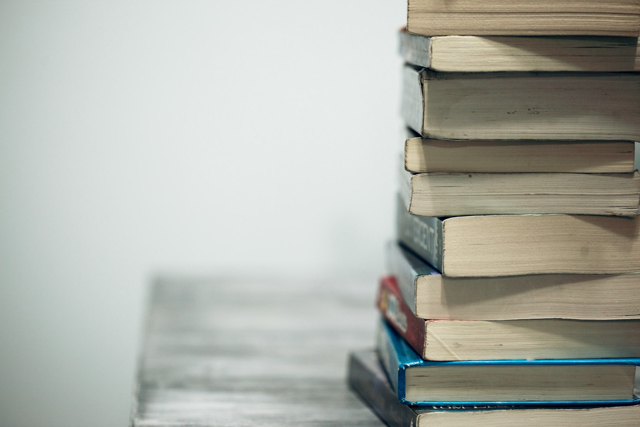
- Dreadful Young Ladies and Other Stories by Kelly Barnhill: A collection of nine brilliant stories full of magic and a touch of haunting horror. This was a book I wished I’d read instead of listening to the audiobook. I want to revisit Barnhill’s words, so I ordered the paperback. My favorite stories were “Mrs. Sorensen and the Sasquatch” and “The Unlicensed Magician.”
- Read Until You Understand: The Profound Wisdom of Black Life and Literature by Farah Jasmine Griffin: Another book I consumed as audio, which I now want to read in text form. The book is a combination of memoir, history lesson, and a course in black literature, music, and art. It should be required reading in high schools.
- Future Home of the Living God by Louise Erdrich: A dystopian novel about an indigenous woman from Minneapolis, adopted by a two liberal Buddhist hippies. Pregnant, the woman searches for her Ojibwe birth mother, during a time of ecological disaster. Pregnant women and live births are rare, so child-bearing women are captured and imprisoned, a familiar plot with a few key variations. This novel hit uncomfortably close to the direction our world is currently heading, not just ecologically, but with controlling women’s bodies.
- Gold Spun by Brandie June: A retelling of the “Rumpelstiltskin” fairy tale, only this time, Rumpelstiltskin is fae and very good looking. Gold Spun is book 1 of a duo and was a light, fun read.
- Brownies and Broomsticks by Bailey Cates: I bought this book when I needed something light to read, and it definitely fit the bill. A bakery, a murder, and a coven of unlikely witches—what more could you want?
In My Gardening and Growing Life
Instead of thinking about gardening, avian flu has been on my mind this spring. Avian flu causes fatal neurological illness. It’s brought in by migrating waterfowl, who may or may not be affected by it themselves. It is mainly affecting wild raptors–eagles, hawks, and owls. The flu has also hit the chicken population, including backyard chickens, which, in the past, have gone untouched.
The flu is also killing blue jays and crows. Songbirds do not appear to be affected, but they may be carriers, so we’ve removed bird feeders to eliminate one source of disease spread.
If you have chickens and such, be careful. Don’t wear the same shoes out and about in the world that you wear around your flock. Also if your dogs or cats go near your chickens, keep your pets away from ponds, bird feeders, and other areas where they may pick up and carry the virus on their feet and fur.
“I dream of a garden overripe and wild. Of a woman gathering the sea into her hands and letting it fall in many colored petals to a green, green earth. I dream of words on a page transforming to birds, and birds transforming to children, and children transforming to stars.“
~ Kelly Barnhill, Dreadful Young Ladies and Other Stories, “Elegy to Gabrielle”
